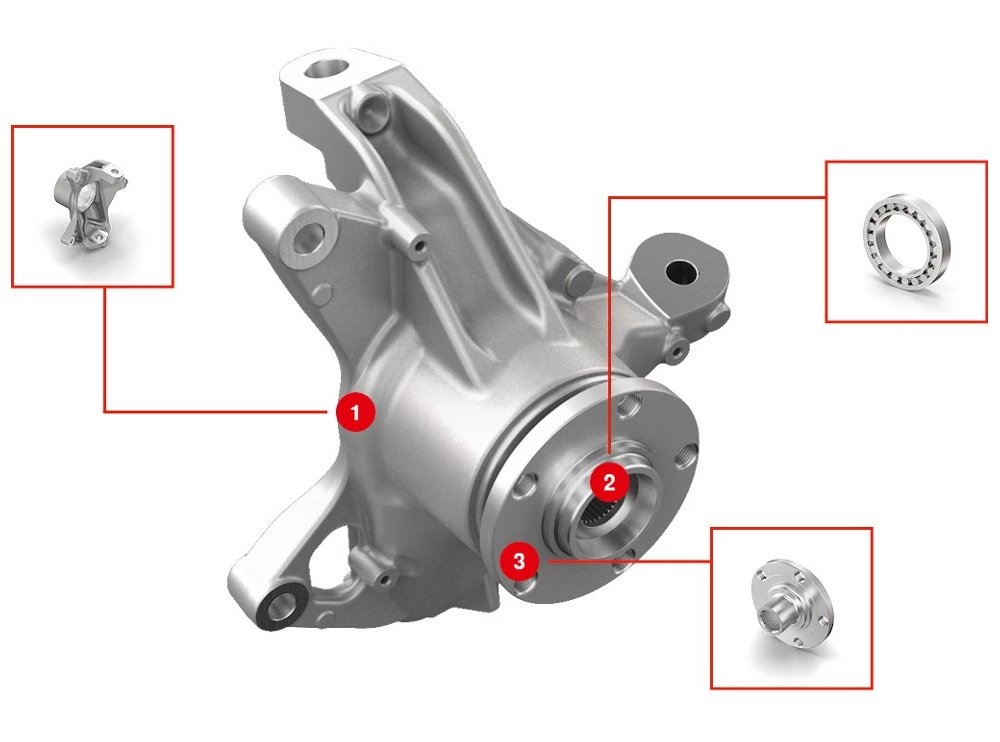Application of CNC Lathe in the Field of New Energy Vehicles
The field of new energy vehicles is one of the key areas for the application of new energy technologies. With increasing global attention to environmental protection and climate change, the market for new energy vehicles is rapidly expanding. Electric vehicles have become the mainstream choice, with their sales increasing year by year. Major automobile manufacturers are introducing electric models, accelerating the development of the new energy vehicle industry chain. At the same time, technological innovations in electric vehicles, such as battery technology, charging technology, and intelligent driving technology, have made significant breakthroughs. Governments also encourage and promote the development of new energy vehicles through policy support and subsidies. In the future, with advancements in technology and reductions in costs, the field of new energy vehicles will have even broader development prospects, making greater contributions to reducing exhaust emissions and improving energy efficiency.
1. Limitations of Traditional Lathes in the Automotive Industry
Traditional lathes have some limitations in machining in the automotive industry:
Traditional lathes usually can only perform simple turning operations and have limited capability for machining complex parts. As the shapes and structures of automotive parts become increasingly complex, traditional lathes often cannot meet their machining requirements.
Furthermore, the accuracy and efficiency of traditional lathes are relatively low, making it difficult to meet the automotive industry's requirements for part accuracy and machining efficiency. Especially in the current trend of the automotive manufacturing industry increasingly emphasizing high precision and efficiency, the machining capability of traditional lathes cannot fully meet market demands.
Traditional lathes rely on manual operation, which introduces human factors and operational errors, affecting machining quality and consistency.
Therefore, against the backdrop of the modern automotive manufacturing industry pursuing high quality and efficiency, the limitations of traditional lathes in machining are gradually becoming apparent. It is necessary to address these limitations by introducing advanced CNC technology and machining equipment to improve the machining quality and efficiency of automotive parts.
2. Advantages of CNC Lathe in the Machining of New Energy Vehicles
CNC lathes offer numerous advantages in the machining of new energy vehicles:
CNC lathes possess high precision machining capabilities, meeting the strict requirements for accuracy and quality of new energy vehicle components such as battery modules and motor parts.
CNC lathes exhibit high efficiency machining characteristics, significantly reducing machining cycles, enhancing production efficiency, and meeting the demands of the rapidly developing new energy vehicle industry.
CNC lathes feature flexible machining functions, capable of handling various complex shapes and structures of component machining requirements, such as curves, hole positions, threads, providing machining support for innovative designs of new energy vehicles.
CNC lathes are easy to operate, with operators only needing to perform simple programming settings to achieve automated machining, reducing human operational errors, and improving machining consistency and stability.
In summary, the advantages of CNC lathes in the field of new energy vehicle machining include high precision, high efficiency, strong flexibility, and high automation, providing important support and guarantee for the development of the new energy vehicle industry.
3. Advantages of Servo Turret in Conjunction with CNC Lathe Machining
The advantages of machining achieved by a servo turret in conjunction with CNC lathes are manifold:
Customized servo turrets can be designed according to specific machining requirements, meeting the processing needs of different workpieces, thereby improving machining flexibility and adaptability.
Servo turrets are equipped with high-precision drive systems, enabling precise cutting control, improving machining accuracy and surface quality.
Servo turrets feature quick tool change functions, allowing for rapid tool changes, saving tool change time, and increasing production efficiency.
Servo turrets also have automation capabilities, enabling automatic adjustment of tool positions and angles, reducing manual intervention, and improving machining consistency and stability.
In conclusion, the advantages of customized servo turrets in conjunction with CNC lathe machining include high flexibility, high precision, improved efficiency, and production stability, providing advanced and reliable machining solutions for the manufacturing industry.
4. Advantages of Y-Axis Side Milling Device with CNC Lathe Machining
The advantages of using a Y-axis side milling device in conjunction with CNC lathe machining are primarily demonstrated in the following aspects:
The Y-axis side milling function enables CNC lathes to have both vertical and horizontal milling capabilities, expanding the machining range and flexibility.
When combined with the high-precision control system of CNC lathes, this turret can achieve the machining of complex surfaces, enhancing machining precision and surface quality.
The Y-axis side milling turret can achieve multi-axis simultaneous machining, improving machining efficiency and production capacity.
This turret features quick tool change functionality, allowing for fast and accurate tool changes, saving tool change time, and enhancing production efficiency.
In summary, the advantages of using a Y-axis side milling device with CNC lathe machining include a wide machining range, high precision, improved efficiency, and enhanced production capacity, bringing more flexible and efficient machining solutions to the manufacturing industry.
5. CNC lathe applications in the automotive field
The application of CNC lathes in the field of new energy vehicles is quite extensive. Here are three examples:
Machining of engine components: CNC lathes are used to machine engine components such as crankshafts, camshafts, pistons, cylinder blocks, and cylinder heads to ensure their accuracy and quality.
Machining of chassis components: This includes the machining of chassis components such as suspension systems, steering systems, and frames to ensure the maneuverability and stability of the vehicle.
Machining of new energy vehicle components: Specifically addressing the needs of new energy vehicles, CNC lathes are used to machine components such as battery modules and motor parts, contributing to the development and application of new energy vehicle technology.
Smartlathe turn-mill CNC lathes have a wealth of experience and mature application solutions in the new energy industry. Welcome to inquire and communicate.







